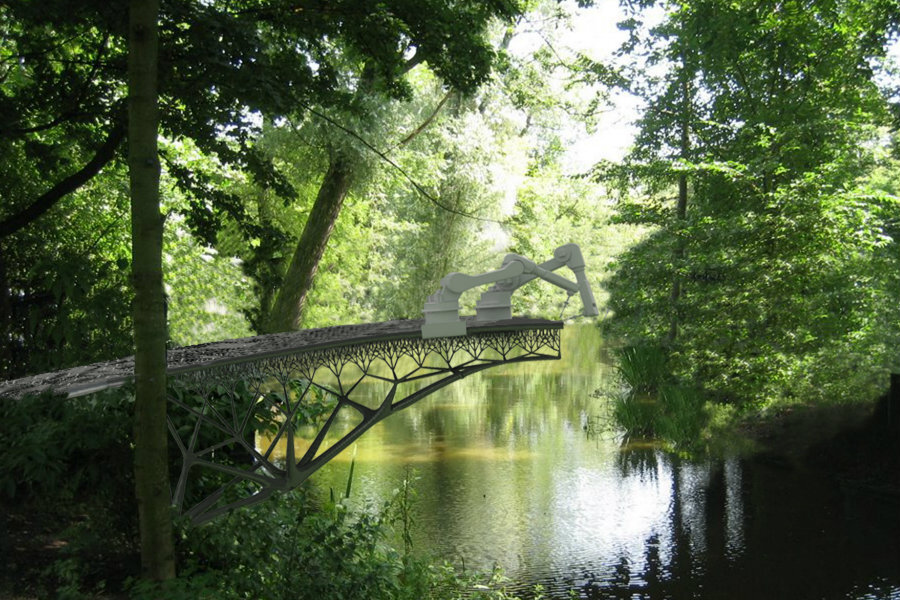Amsterdam 3D-printed bridge: Would you drive over this bridge?
Loading...
Picture this: Robotic arms craft an ornate steel bridge, strong enough to stand for decades, almost out of thin air.
It’s not a scene from a sci-fi flick. In the first enterprise of its kind, a Dutch startup is set to build a very real pedestrian bridge over a canal in Amsterdam using its own 3D-printing robots.
The project, set to be completed over two months in 2017, is a test for MX3D, a research and development firm whose specialized, multi-axis robots are built to “draw” metal and resin structures in 3D. The technology would allow infrastructure and other large objects to be printed in place, a possibility that could have pivotal implications for construction and design.
More broadly, the project marks a crucial step forward in the union of art, industry, and technology.
“This bridge will show how 3D printing finally enters the world of large-scale, functional objects and sustainable materials while allowing unprecedented freedom of form,” Joris Laarman, a Dutch artist and entrepreneur who will be designing the bridge, said on the project’s page.
“The symbolism of the bridge is a beautiful metaphor to connect the technology of the future with the old city, in a way that brings out the best of both worlds,” he added.
MX3D’s robots, like other 3D printers, use additive manufacturing technology, which involves the printing of small increments of raw material – resin, plastic, or in this case, molten metal – that are welded to form lines. To build the bridge, two robots each starting from opposite banks of the canal would print multiple, intersecting lines, meeting in the middle as they create “a strong, complex structure that would span the canal,” CNET News reported.
Each robot will also be printing its own supports along the way, allowing it to work autonomously.
Already Mr. Laarman and MX3D have proven that the concept works: In June 2014, Laarman showed off the technology’s potential in an exhibit of 3D-printed metal sculptures at the Friedman Benda Gallery in New York City.
Still, the team faces considerable challenges, including the errors inherent to 3D printing, such as misplaced layers. To help work those out, Laarman and the MX3D team partnered with architecture and engineering software firm Autodesk.
“Robots tend to assume that the universe is made of absolutes, even though that’s not true,” Maurice Conti, head of Autodesk’s applied research lab, told innovation magazine Fast Company. “So we need to program them to have real-time feedback loops, and adapt in real-time, without even being told to.”
It’s a project at a grand scale, and Fast Company noted that even the MX3D team won’t know for certain if the plan will work until they do it.
But Laarman appears confident in the technology’s potential. In an interview with Architectural Digest last year, he compared this generation to the modernists of the industrial age, whom he said faced parallel challenges and successes in their bid to change the way objects were built and sold.
“They worked with industrial machines and the potential of standardization, while we grew up with digital machines,” he told the magazine. “We’re in a similar period. You see the same sort of optimism.”






